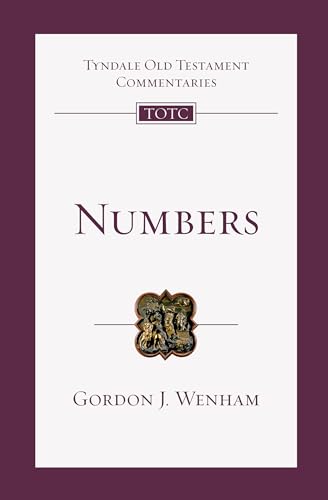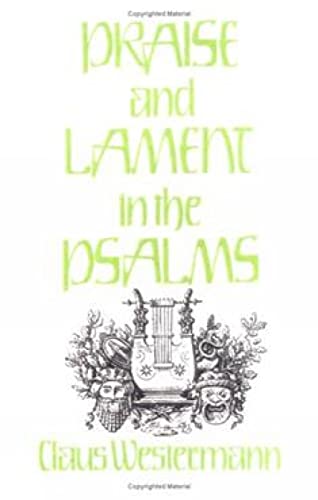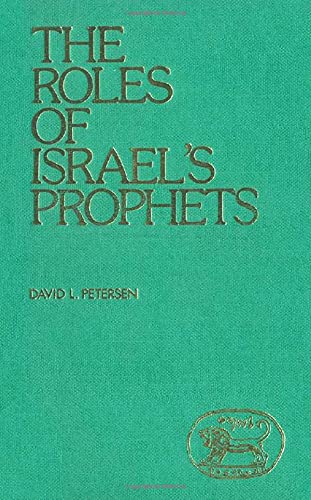Hardly has Gordon Wenham’s first-rate commentary on Leviticus (New International Commentary on the Old Testament) reached the library shelves when he has given us this excellent contribution to the Tyndale series. Together these two works should stimulate a renewal of interest in books that have long been neglected. Both commentaries make a conscious effort to show the value of superficially obscure and apparently irrelevant Israelite laws for modern readers of the Bible. Many preachers will find a long-lasting store of sermon material in these two books.
As in his Leviticus, so here, Dr Wenham applies to the Old Testament laws and rituals the theories of anthropologists developed in recent years by Mary Douglas, Edmund Leach, and J. Soler. He warns of the dangers inherent in transferring observations drawn from the study of contemporary societies to ancient ones, but the successes that follow his exercises speak strongly in favour. Why, for example, were some animals clean, others unclean? The answer suggested is that animals reflect mankind in some ways, an ancient idea now rehabilitated and systematized (pp. 33, 34). Such studies lead to a welcome emphasis on treating each section of the text as a whole, searching for its significance both through these anthropological techniques and by sensitive literary analysis. In this latter, too, the author deserves thanks. He is not content to disagree with standard divisions of Numbers between ‘J, E, and P’, but offers his own perceptions of the book’s structure. He discerns three major cycles, separated by three ‘travelogues’, each with certain common motifs, and finds many balanced patterns within them that point to a sophisticated writer with profound theological insight (notably in the Balaam chapters).
As to the age of Numbers, Wenham accepts the thirteenth century bc for the origin of the traditions, expressing uncertainty over the amount of ‘expansion, re-writing and editing’ they may have passed through before the present book of Numbers appeared, and he places that event in the early part of the Monarchy. He emphasizes, as is fashionable, that his concern is with the text in its final form, not with different putative sources.
Among the most peculiar passages in Numbers is the ordeal for the woman suspected of adultery (5:11–31). Wenham asks, in effect, why all the mumbo-jumbo of holy water, sanctuary dust, and curses washed into the water was thought necessary, why a curse alone was insufficient. He discusses helpfully the reasons for ritual, pointing to current customs in secular spheres that have similar values. This particular passage he shows to be related to its context (pollution, breaking faith) and to be intelligible as a unity. Some supernatural means of detection was needed in the first place because the alleged crime could not be proved by witnesses or clear evidence. One aspect that may be added is that the woman was probably visibly pregnant at the time of the ordeal (see W. McKane, VT 30 (1980), p. 474). Wenham explores the way the punishment fits the crime, exploring the semantic range in some of the significant terms (vessel, water, dust). Perhaps a little more stress could be given to the effects of these rituals. The threat of divine punishment was very real to ancient people. This is evident in many Babylonian texts of the second millennium bc where reports of lawsuits state ‘X was taken before the gods (to take an oath), but he turned away from the gods’. Adjudged guilty, he paid the penalty the judges imposed rather than face divine wrath.
Archaeological discoveries supply some information directly and indirectly for Dr Wenham’s exegesis. A study of ancient lampstands suggests Numbers 8 describes a type made late in the second millennium bc. Discovery of a copper snake at Timnah in a temple used during the twelfth century bc is, the author claims, ‘remarkable confirmation of the biblical story, or at least its origin in the wilderness period’ (p. 156). Illuminating as such discoveries may be, they do not, in fact, confirm the biblical story or its date of origin. All they can do is to show that the biblical account is feasible if set in that period. The reviewer does not accept that ‘there must be a connection between’ the Timnah serpent and the biblical story, nor that Moses took over Midianite ideas about tabernacle design, or vice versa. Striking similarities do not prove direct connection. The tabernacle, at least, has Egyptian analogues which are more compelling. Archaeological evidence always needs to be treated with caution, it rarely gives conclusive proof of anything by itself. One discovery which came into prominence too late for Dr Wenham to use, but is worth noting, is the text about Balaam from Tell Deir ‘Alla in the Jordan valley. Written on the plaster of a wall about 700 bc, this fragmentary narrative in a local dialect and in Aramaic script tells of visions the seer Balaam was given at night by the gods and reported to the people. This does not prove Balaam existed, but it does prove that he was a figure known to some people in the area of Israel during the Monarchy. It underlines the remarkable scene of a pagan prophet hired by a pagan king blessing God’s chosen people as they stand at the edge of the promised land (cf. p. 169). It is a reminder of the enormous quantity of ancient traditions that have perished, heightening appreciation for the survival of the Iraselite ones collected in the Old Testament.
Dr Wenham serves his readers well in linking Numbers with other parts of the Old Testament in quotation and reminiscence. Thus he gives weight to the solidarity of the Canon. One escaped him, the law permitting late celebration of Passover is seen in action in 2 Chronicles 30:2, 3.
No-one who reads Numbers for spiritual instruction or for academic study can afford to ignore the Tyndale Old Testament Commentary of Numbers by Gordon Wenham.
A. R. Millard
University of Liverpool






